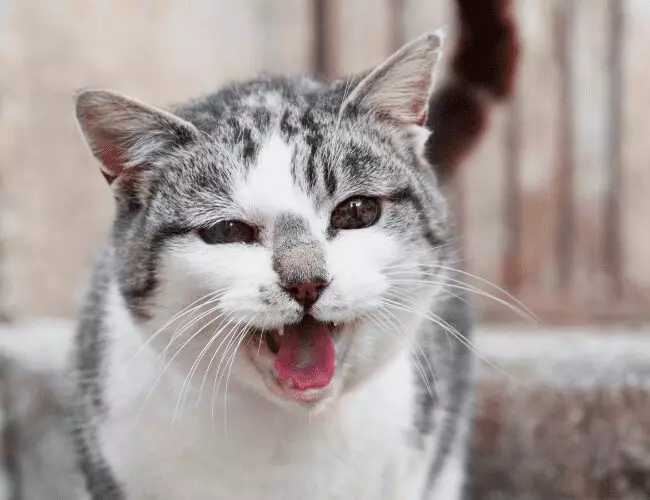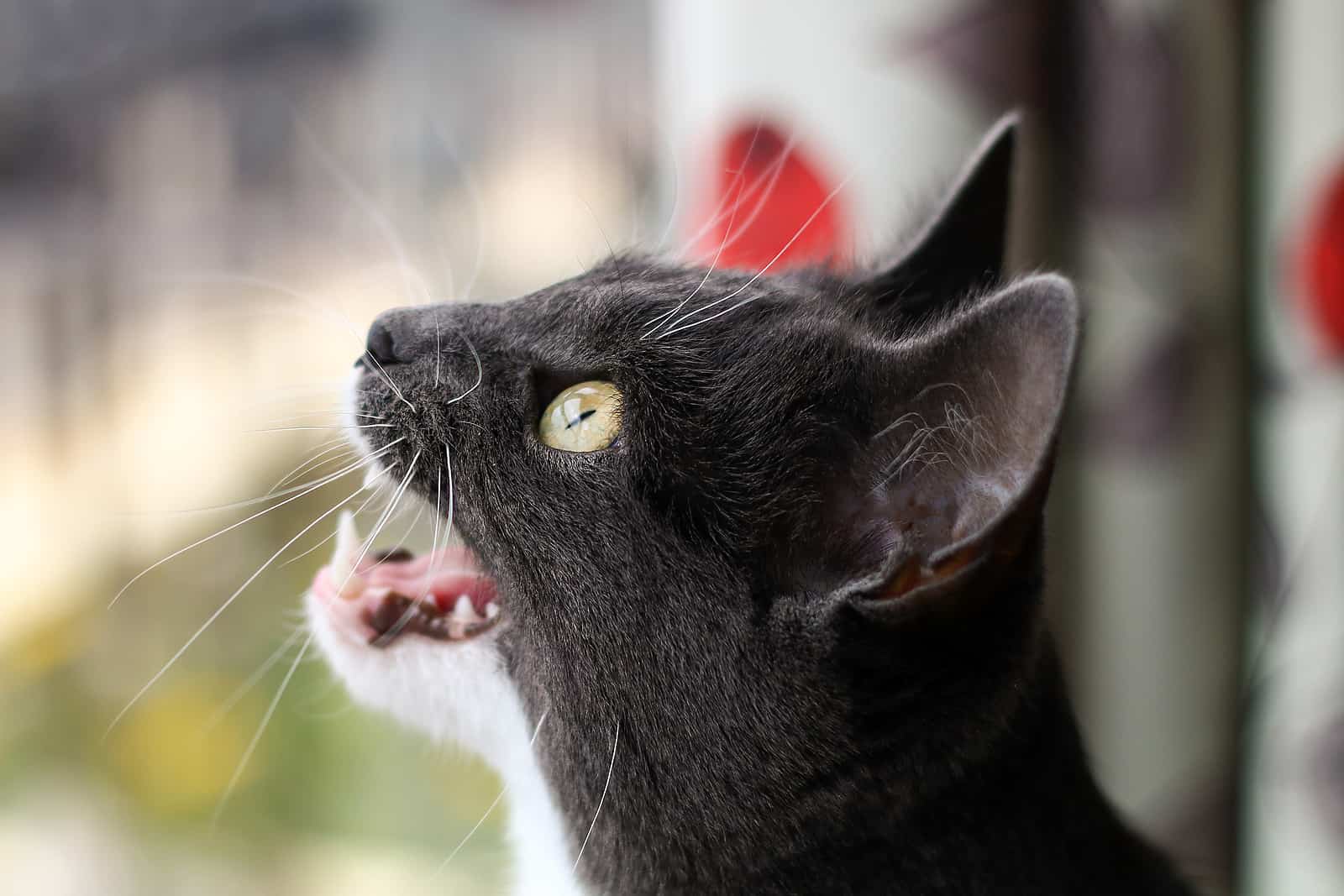Feline utterances go well beyond your standard meow. Through subtle differences in their hisses, growls, and purrs, your cat communicates a wide range of moods and emotions. Find out what your kitty is saying with his or her cat sounds.
Fun Fact: Aside from birds, cats have the widest range of vocalizations of any domestic pet!
- 1. Meowing: Cat-To-Human Communication
- 2. Purring: The Sound Of Contentment Or Stress?
- 3. Growling: The Cat Sound For “Something Doesn’t Feel Right.”
- 4. Hissing: A Cat’s Warning Signal
- 5. Chirping: Cat For “Hey, Look At This!”
- 6. Cat Chatter: The Mournful Sound Of A Frustrated Hunter
- 7. Yowling: Sickness Or Stress?
- 8. Catterwauling: The Most Mysterious Cat Sound
- 9. Screaming: The Sound Of A Struggle
- 10. Breed-Specific Chatter
1. Meowing: Cat-To-Human Communication
Meowing is the most commonly utilized cat sound and it can have many meanings. Originally uttered by nursing kittens, the meow alerts mama that the kitten needs attention. In adult cats, meowing is almost exclusively reserved for communication with humans. When a cat meows at their person, it could mean:
- “Hello.” or “Welcome Home.”
- “What are you doing?” – “Mew?”
- Worry or Annoyance – “Meowww”
- “I’m hurting.” – incessant, rapid-fire meowing
- “I want something.” (food, attention, etc.)
2. Purring: The Sound Of Contentment Or Stress?
Purring is almost always associated with a happy, relaxed cat, but it can also be heard during times of stress. A sick or anxious cat may purr to comfort himself, similar to nervous humming in humans. You can tell the difference by assessing the cat’s body language. If the ears are flat and the body is tense, the purring is likely a sign of discomfort.
3. Growling: The Cat Sound For “Something Doesn’t Feel Right.”
Snarling and growling are indicators that a cat is feeling fearful, angry, or territorial. These sounds tend to start out low and increase in pitch, often ending in a yowl. A growling cat will most likely show defensive body language signals such as puffed up fur, arched back, flat ears, and a twitching tail.
4. Hissing: A Cat’s Warning Signal
Hissing is usually preceded by growling and defensive body posture. It means the cat senses a threat and is ready to fight or flee if necessary. When hissing is accompanied by spitting, give your cat space and try to remove the threatening stimuli.
5. Chirping: Cat For “Hey, Look At This!”
The chirp is originally used by mothers to get her kittens’ attention. Adult cats may chirp at their humans for the same reason – to get them to pay attention to something serious like another cat or an empty food bowl. Chirping may also express happiness or excitement.
6. Cat Chatter: The Mournful Sound Of A Frustrated Hunter
Teeth chattering is often accompanied by chirping, squeaking or soft crying. As adorable as it seems to us, the chatter indicates predatory excitement and frustration at not being able to hunt. Indoor kitties watching birds or squirrels from a window are most commonly responsible for this cat sound.
7. Yowling: Sickness Or Stress?
Feline yowls have a distinctly lonely sound indicating worry, discomfort, territorial concern, or mating issues. This form of communication typically occurs cat-to-cat. In addition to mating and defensiveness, a yowling cat may be trying to express pain or disorientation. If your kitty is yowling and you have ruled out causes such as environmental stress and loneliness, visit your vet to check for illness and cognitive issues.
8. Catterwauling: The Most Mysterious Cat Sound
Catterwauling is somewhere between a yowl, a howl, and a whine. When uttered by a female in heat it may have a distinctive “ahh-roo-ugh?” rhythm. The return calls of intact males can also fall into the catterwaul category, as can some vocalizations of cats feeling insecure, lonely, defensive, disoriented, or painful.
9. Screaming: The Sound Of A Struggle
Thankfully, screaming is fairly rare in domestic cats. It is typically heard from mating females and actively fighting felines. While fights mostly occurs between intact male cats, neutered kitties may also get into skirmishes while defending their territory from invaders.
10. Breed-Specific Chatter
Some breeds are chattier than others. Siamese are famous for their back-talk, as are many other Asian breeds. On the other hand, Persians, Russian Blues, Norwegian Forest Cats, and Maine Coons are typically on the quieter side. According to ModernCat.com, cats with short hair tend to be more talkative than their longer-haired cousins.
Did you learn anything new and interesting about our feline friends? Share this article with other cat lovers that you know so that they can learn something, too.
Your cat’s body language can say a lot about what’s on their mind. Read this article here on Cattitude Daily to decode the top five things you must know.







